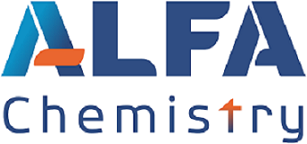| Alfa Chemistry | |
|---|---|
| Country: | United States |
| Tel: | 5166625404 |
| E-mail: | support@alfa-chemistry.com |
| QQ: | |
| Skype: | Chat Now! |
Breaking Barriers: Harnessing the Potential of Adjuvants in Vaccine Development
Release time: 2023-07-19
Infectious diseases seriously threaten human health, and various infectious diseases may cause millions of severe cases and even death every year. Vaccination has been one of the most effective public health interventions in history, preventing millions of deaths worldwide. However, the success of vaccines relies not only on the antigens they carry but also on additional components known as vaccine excipients.
Vaccine excipients play a crucial role in the development and manufacturing of vaccines. These are substances added to the vaccine formulation to enhance its stability, efficacy, and safety. Vaccine excipients can include adjuvants, stabilizers, preservatives, and additives. Each excipient serves a specific purpose in ensuring that vaccines are effective, have a longer shelf-life, and can be safely administered. Among them, adjuvants play a crucial role in enhancing the immune response to vaccines, thereby increasing their effectiveness, notably as carriers, depots and stimulators of the immune response.
Mechanism of Vaccine Adjuvants
Vaccine excipients, including adjuvants, are added to vaccine formulations to enhance the immune response by providing necessary signals to the immune system. Adjuvants can stimulate the innate immune system, improving the recognition of antigens and promoting a more robust adaptive immune response.
One key mechanism by which adjuvants enhance vaccine responses is through their interaction with pattern recognition receptors (PRRs). These receptors are expressed by various cells of the innate immune system and can recognize specific molecular patterns associated with pathogens. When an adjuvant activates PRRs, it triggers a cascade of signaling events leading to the activation of immune cells and the production of cytokines and chemokines. This activation, in turn, leads to the recruitment of immune cells to the site of vaccination, improving the immune response.
Continued Advances in Vaccine Adjuvants
In recent years, the era of knowledge-guided design of new vaccine adjuvants has opened with the continued advancement of key immunological insights into vaccine immune responses and mechanisms of adjuvant action. The development of effective adjuvants has allowed for the creation of safer and more potent vaccines, contributing significantly to the prevention and control of infectious diseases worldwide.
Historically, vaccine adjuvants have been based on aluminum salts, such as aluminum hydroxide and aluminum phosphate, which have been used for many decades. These adjuvants enhance the immune response, particularly for protein-based vaccines, by forming a depot at the injection site, prolonging antigen exposure. However, they have limitations, such as limited efficacy in inducing cell-mediated immune responses and inadequate protection in certain populations (e.g., elderly and immunocompromised individuals).
Emulsion adjuvants are also an important group of adjuvants whose ancestors are complete (CFA) and incomplete Freund's adjuvant (IFA). Both adjuvants are water-in-oil emulsions that carry antigens and stimulate the innate immune system. However, due to the side effects of both CFA and IFA, this prompted the search and development of safer alternative adjuvants. Oil-in-water emulsions based on biodegradable and biocompatible squalene first appeared in the 1990s, and major progress has been made since then. For example, MF59 is safe and well tolerated, and the AS03 adjuvanted monovalent influenza A (H5N1) vaccine was approved in the US in 2013.
In addition, some new vaccine adjuvants are being studied for use in various vaccine formulations, such as TLR agonists, immune checkpoint inhibitors, nanoparticle adjuvants, combination adjuvants, and nucleic acid adjuvants, etc. These new approaches to adjuvant research offer exciting prospects for improving vaccine efficacy and developing effective immunotherapies.
Reference
- Facciolà, Alessio, et al. "An overview of vaccine adjuvants: current evidence and future perspectives." Vaccines 10.5 (2022): 819.
- Shi, Shuting, et al. "Vaccine adjuvants: Understanding the structure and mechanism of adjuvanticity." Vaccine 37.24 (2019): 3167-3178.
- O’Hagan, Derek T., Rushit N. Lodaya, and Giuseppe Lofano. "The continued advance of vaccine adjuvants–‘we can work it out’." Seminars in immunology. Vol. 50. Academic Press, 2020.

